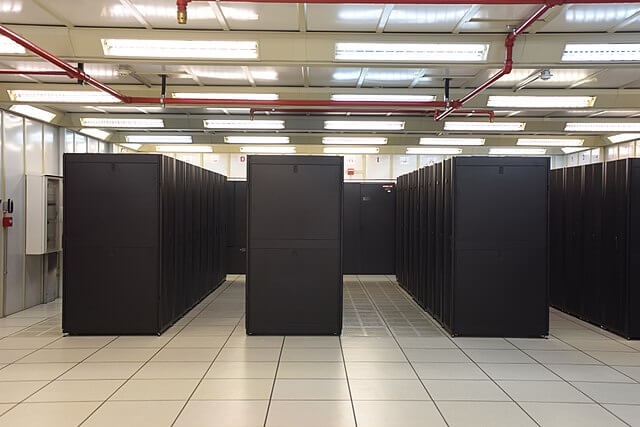
Experts believe that capturing excess heat could power most of Europe.
Environmental activists assert that as a solution to the energy crisis, preventing heat waste is largely ignored.
Experts in the field of environmental issues contend that despite the fact that curbing this waste as a potential remedy for the energy crisis, the excess heat produced across Europe could almost power the entire region.
“The global energy crisis is a wakeup call to stop wasting energy,” said Toby Morgan, senior manager for the built environment at Climate Group, an environmental not-for-profit. “Now, more than ever, we need to make better use of the energy we already produce, we simply can’t afford to let it literally escape out the window. Energy efficiency improvements, like capturing and recycling excess heat, are absolutely critical to lower fossil fuel demand and lower bills.”
The global engineering company Danfoss released a report this week that estimated that the amount of excess heat in the EU alone was equivalent to 2,860 TWh per year—roughly equivalent to the EU’s total energy demand for heat and hot water.
Supermarkets, transportation networks, data centers, and commercial buildings are just a few examples of the many places where excess heat is released into the atmosphere. According to the report’s authors, existing heat recovery technologies like heat pumps, as well as more energy-efficient air conditioners and manufacturing machinery, can capture and utilize a significant amount of this. Improved urban planning and district energy systems based on networks of renewable energy sources for heating and cooling are two additional options.
The research cited in the report, which builds on his team’s previous Heat Roadmap Europe projects, was led by Aalborg University professor Brian Vad Mathiesen, who teaches energy planning and renewable energy systems. Vad Mathiesen warned that Europe’s energy security was in jeopardy, “The amount of cities, regions and countries in Europe which waste heat while spending billions on natural gas or electric heating is mind-blowing.”
“Take the Netherlands – there is virtually no district heating even though there is almost twice the amount of waste heat compared to the heat demand. Denmark is the same size but has towards 60% percent district heating with only one third of the population. The use of waste heat is certainly not connected to technical differences. While the physical laws are the same, the political will and traditions are very different.”
The excessive heat generated by heavy industry, such as the production of steel and cement, had “huge, unharnessed potential.” That amounts to more than 267 TWh per year in the EU, which is more than the sum of the heat produced by Germany, Poland, and Sweden in 2021.
Server farms are additionally significant shoppers of power. ReUseHeat, a European Union project that investigated obstacles to urban heat recovery, reveals that in 2020, European data centers consumed approximately 3.5% of the region’s electricity demand. The UK has a lot of excess energy, including from 456 data centres, according to the report. “That’s third most in the world, just behind Germany and the US,” explains Kim Fausing, the president and chief executive of Danfoss, who believes recycling heat is a crucial step towards a green transition.
“If businesses were to harness all the excess heat from these centres, the emissions savings and revenue from selling this heat would be highly significant. In Greater London, we have identified at least 648 eligible excess heat sources, including data centres, underground stations, supermarkets, wastewater treatment plants, and food production facilities. Why aren’t businesses and local government organisations using these?” said Fausing, adding that London’s excess heat equated to 9.5 TWh a year, roughly the amount of heat required to heat 790,000 households. “Reusing excess heat offers incredible opportunities for businesses throughout the UK to reduce their emissions, save money and make money. What are we waiting for?”
Vad Mathiesen proposes a heat planning directive that enables local authorities to plan in accordance with local conditions in order to swiftly address the energy crisis. This would require a more in-depth mapping of the existing sources of waste heat, followed by the creation of thermal networks that distribute heat more efficiently and initiatives to increase buildings’ energy efficiency.
“Energy efficiency needs to be a top priority for any business or government, particularly during an energy crisis,” said Morgan, who advises every corporate net zero commitment to include a time-bound energy efficiency target, and for governments to incentivise the uptake of energy efficient technologies. “Energy efficiency improvements are climate critical. The time for action is now.”
——————————————————————————
At Natural World Fund, we are passionate about stopping the decline in our wildlife.
The declines in our wildlife is shocking and frightening. Without much more support, many of the animals we know and love will continue in their declines towards extinction.
When you help to restore a patch of degraded land through rewilding to forests, meadows, or wetlands, you have a massive impact on the biodiversity at a local level. You give animals a home and food that they otherwise would not have had, and it has a positive snowball effect for the food chain.
We are convinced that this is much better for the UK than growing lots of fast-growing coniferous trees, solely to remove carbon, that don’t actually help our animals to thrive.
This is why we stand for restoring nature in the UK through responsible rewilding. For us, it is the right thing to do. Let’s do what’s right for nature!
Support our work today at https://naturalworldfund.com/ and join in the solution!

